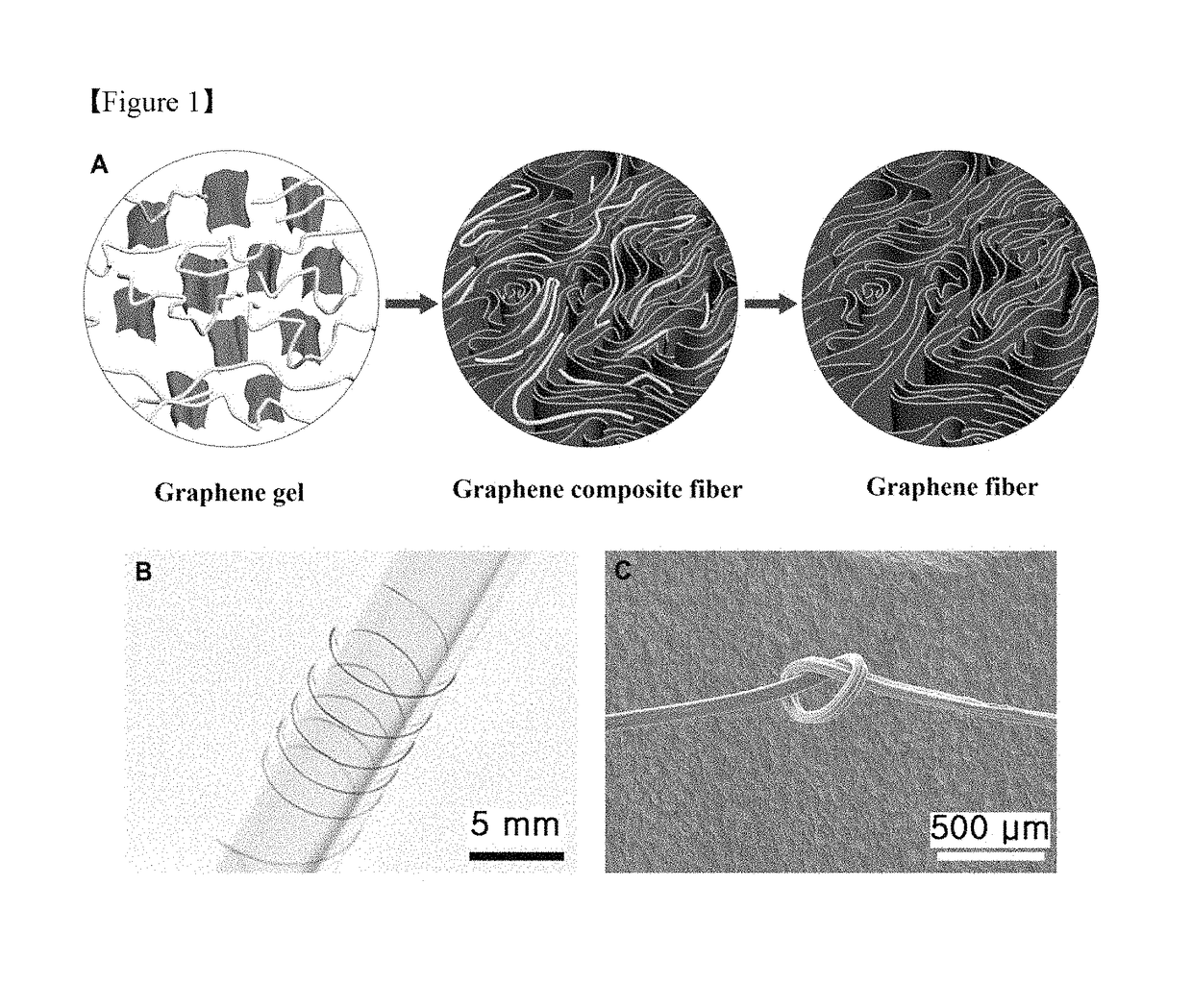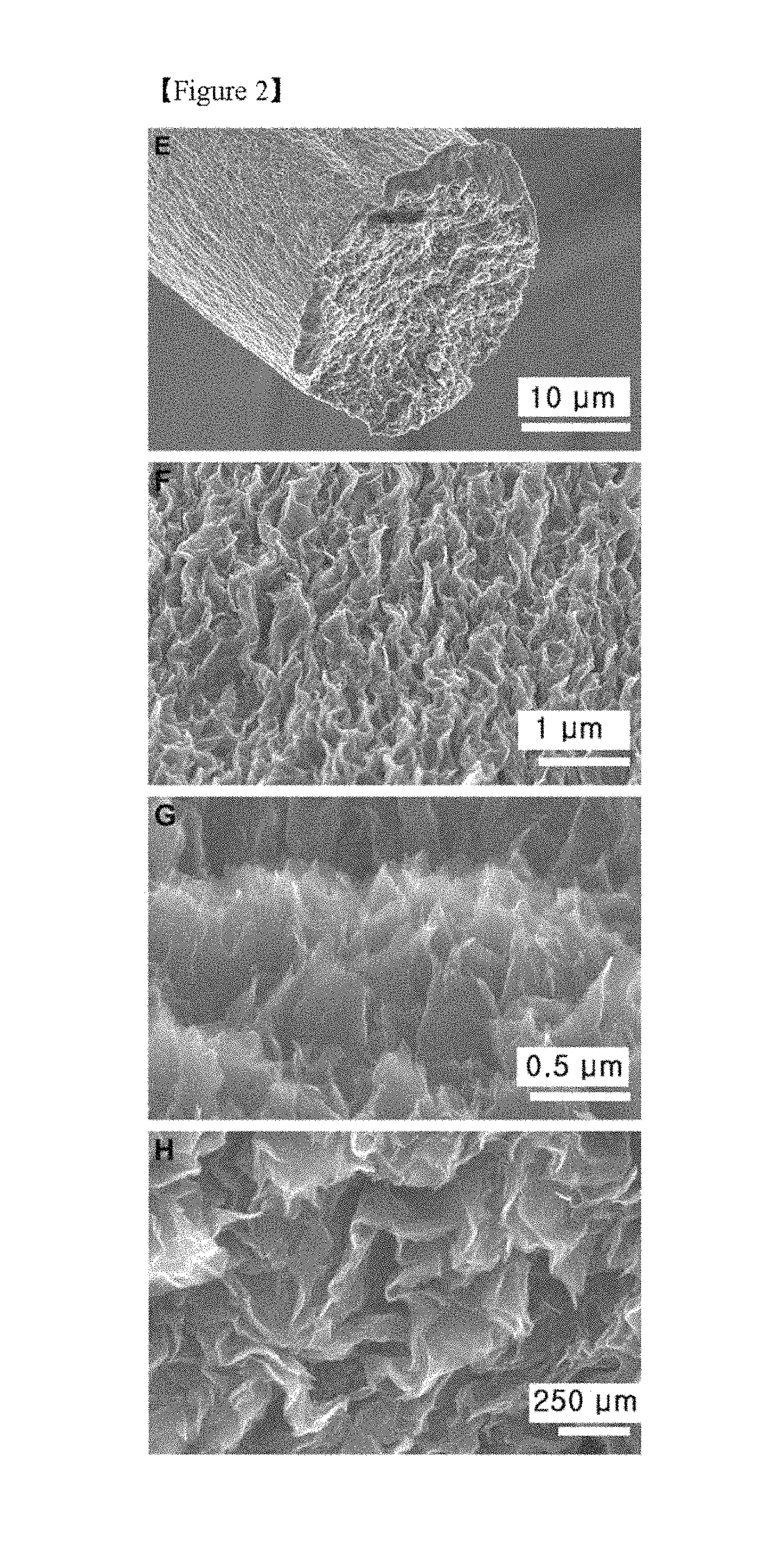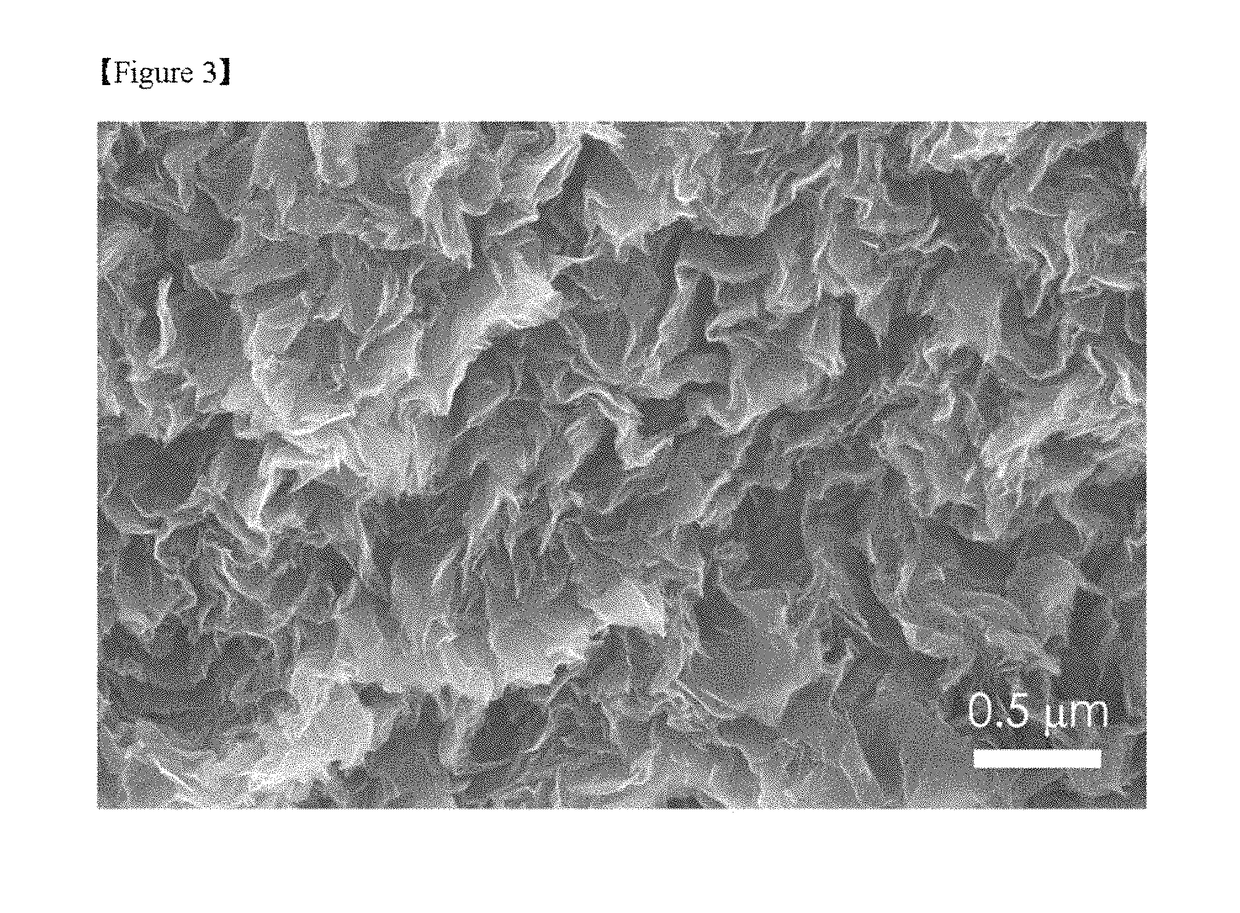Method for manufacturing graphene fiber
a graphene fiber and fiber technology, applied in the field of graphene fiber production, can solve the problems of graphene composite fibers that cannot be developed alone or at a considerable concentration, graphene composite fibers that cannot be applied to energy and hydrogen storage media, and the dense layered structure of graphene is an obstacle to achieving maximum mechanical properties, etc., to achieve the effect of superior mechanical and electrochemical properties and high electrical conductivity of porous graphene fibers
- Summary
- Abstract
- Description
- Claims
- Application Information
AI Technical Summary
Benefits of technology
Problems solved by technology
Method used
Image
Examples
example 1
on of Solution of Graphene (RCCG) Chemically Converted by Reduction
[0045]In accordance with the method illustrated in FIG. 1, RCCG was dispersed in dimethylformamide (DMF) in the presence of an appropriate amount of triethylamine to obtain a stable graphene dispersion. Several grams of RCCG was obtained by reducing an aqueous dispersion of CCG with excess hydrazine at 95° C. over 2 h in accordance with previously reported methods (Li, D., Muller, M. B., Gilje, S., Kaner, R. B. & Wallace, G. G. Processable aqueous dispersions of graphene nanosheets. Nature Nanotech. 3, 101 (2008)). As a result of the reduction reaction, the graphene aggregated in the aqueous solution. The graphene aggregates were acidified with dilute sulfuric acid under vigorous stirring to a pH of 2 or less, and transferred to a sintered funnel. The aggregates were washed with a large amount of Milli-Q water on the funnel until the pH reached about 7. The filtered material was dried under vacuum at 70° C. for 48 h ...
example 2
n of Graphene Fiber
[0046]The solvent (DMF) of the graphene flake dispersion was exchanged with distilled water by centrifugation. The G / F aqueous solution was mixed with sodium dodecyl benzene sulfonate (SDBS) by ultrasonication.
[0047]The graphene dispersion was slowly injected into a coagulation bath containing PVA (molecular weight=89,000−124,000, degree of hydrolysis=˜99%) through a syringe (26 gauge) and wet spun to continuously produce a uniform graphene / PVA fiber.
[0048]The graphene / PVA was annealed at 600° C. to remove the PVA, leaving behind a porous fiber composed of graphene alone. The diameter of the graphene fiber was 28 μm.
Experimental Example: Characterization of the Graphene Fiber
[0049]The graphene fiber was sufficiently flexible and thus could be wound on a glass tube having a small diameter of 6.5 mm without mechanical damage, unlike graphene papers tending to be brittle (FIG. 1B). Complete knots of the graphene fiber were difficult to form, but the formation of suff...
PUM
| Property | Measurement | Unit |
|---|---|---|
| electrical conductivity | aaaaa | aaaaa |
| diameter | aaaaa | aaaaa |
| diameter | aaaaa | aaaaa |
Abstract
Description
Claims
Application Information
 Login to View More
Login to View More - R&D
- Intellectual Property
- Life Sciences
- Materials
- Tech Scout
- Unparalleled Data Quality
- Higher Quality Content
- 60% Fewer Hallucinations
Browse by: Latest US Patents, China's latest patents, Technical Efficacy Thesaurus, Application Domain, Technology Topic, Popular Technical Reports.
© 2025 PatSnap. All rights reserved.Legal|Privacy policy|Modern Slavery Act Transparency Statement|Sitemap|About US| Contact US: help@patsnap.com



